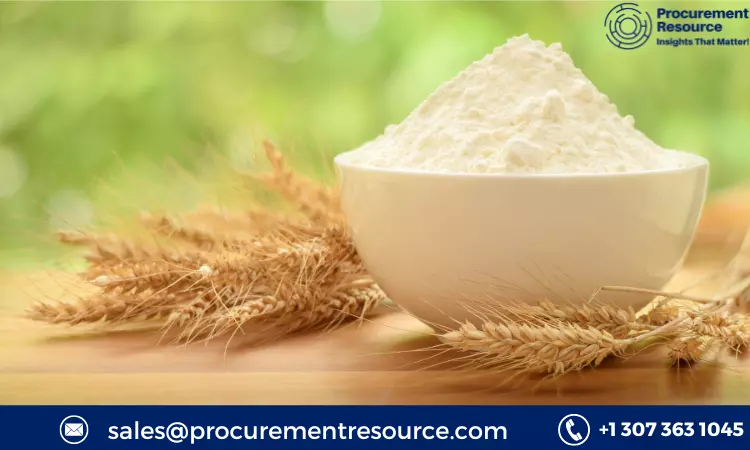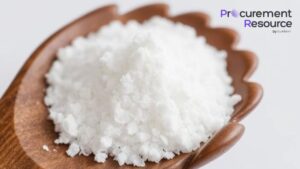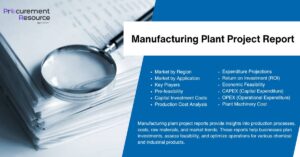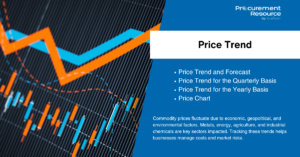
The latest report titled “Milling wheat Production” by Procurement Resource, a global procurement research and consulting firm, provides an in-depth cost analysis of the production process of Milling wheat.
Procurement Resource study is based on the latest prices and other economic data available. It also offers additional analysis of the report with detailed breakdown of all cost components (capital investment details, production cost details, economics for another plant location, dynamic cost model). In addition, the report incorporates the production process with detailed process and material flow, capital investment, operating costs along with financial expenses and depreciation charges.
Request For Free Sample: https://procurementresource.com/production-cost-report-store/milling-wheat/request-sample
Procurement Resource’s detailed report describes the stepwise consumption of material and utilities along with a detailed process flow diagram. Furthermore, the study assesses the latest developments within the industry that might influence Milling wheat production cost, looking into capacity expansions, plant turnarounds, mergers, acquisitions, and investments.
Procurement Resource Assessment of Milling wheat Production Process:
1. Milling wheat Production Cost Via cleaning, conditioning, gristing, separating, and milling: This report presents the detailed production methodology and cost analysis of Milling wheat industrial production across Milling wheat manufacturing plants. The first step of the process is conditioning which involves washing the wheat grains to get rid of any stones, sticks, or other contaminants. During this step, the grains are soaked in water to get rid of the bran and maintain uniform moisture levels. After this, conditioned grains are grated with cleaned wheat in a process called gristing. The outer bran portion of the wheat is next removed from the grist by rolling it beneath rollers, and then the wheat is crushed or milled and sifted. The harvested wheat is once more crushed and sorted to produce milled wheat or wheat flour.
Request For Free Sample: https://procurementresource.com/cost-analysis/milling-wheat-production-via-cleaning-conditioning-gristing-separating-and-milling/requestsample
Product Definition:
Milling wheat is a processed type of wheat, produced by grinding or milling the wheat kernels into flour. Wheat is a popular cereal and a staple food in various nations. When the wheat grains are milled, it breaks down the kernels to separate the endosperm, bran, and germ. This processed wheat can be used to produce different types of flour like all-purpose flour, bread flour, cake flour, etc. They all have different protein and gluten profiles and are suitable for a variety of culinary applications. The gluten proteins found in milled wheat give the dough its elasticity and shape. Varied kinds of wheat flour have varied amounts of gluten, which has an impact on how well-baked items rise, maintain their shape, and have a desirable texture.
Market Drivers:
The primary market driver of milled wheat is the baking industry. In this industry, milled wheat is used to produce a wide variety of baked goods such as bread, cakes, pastries, cookies, and many more. In order to make pasta and noodles of desired texture and elasticity, milled wheat plays a crucial role. Also, snack items like bars, crackers, and biscuits are also made using this flour. It improves the structure, flavor, and texture of these products. It is also a crucial component in the production of beer, fermented sugars, and several alcoholic beverages such as vodka.
Looking for an exhaustive and personalised report that could significantly substantiate your business?
Although Procurement Resource leaves no page unfurled in terms of the rigorous research for the commodities that make the heftiest base of your business, we incline more towards tailoring the reports per your specificities. All you need is one-to-one consulting with our seasoned consultants to comprehend the prime parameters you are looking to pin your research on.
Some of the common requests we receive from our clients include:
- Adapting the report to the country/region where you intend to establish your plant.
- Adjusting the manufacturing capacity of the plant according to your needs.
- Customizing machinery suppliers and costs to meet your requirements.
- Providing additional information to the existing scope based on your needs.
About Us:
Procurement Resource ensures that our clients remain at the vanguard of their industries by providing actionable procurement intelligence with the help of our expert analysts, researchers, and domain experts. Our team of highly seasoned analysts undertakes extensive research to provide our customers with the latest and up-to-date market reports, cost models, price analysis, benchmarking, and category insights, which aid in simplifying the procurement process for our clientele.
Procurement Resource work with a diverse range of procurement teams across industries to get real-time data and insights that can be effectively implemented by our customers. As a team of experts, we also track the prices and production costs of an extensive range of goods and commodities, thus, providing you with updated and reliable data.
We, at Procurement Resource, with the help of the latest and cutting-edge techniques in the industry, help our clients understand the supply chain, procurement, and industry climate so that they can form strategies that ensure their optimum growth.
Contact Us:
Company Name: Procurement Resource
Contact Person: Jorge Garcia
Email: sales@procurementresource.com
Toll-Free Number: USA & Canada – Phone no: +1 307 363 1045 | UK – Phone no: +44 7537 132103 | Asia-Pacific (APAC) – Phone no: +91 1203185500
Address: 30 North Gould Street, Sheridan, WY 82801, USA





